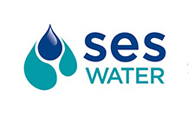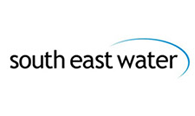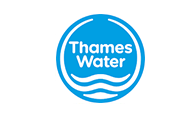Glossary
-
Abstraction
Taking water from the environment (under licence from the Environment Agency) for use in the public water supply or industry.
-
Abstraction licence
Authorisation granted by the Environment Agency to allow the removal of water from a source.
-
Adaptive planning
Adaptive planning allows us to account for uncertainty, such as different impacts of population growth and climate change, which is useful when planning into the future.
For each new plan, we monitor how previous ones have been implemented, what impacted their operation and incorporate new forecasts into modelling. We’re then able to adapt future plans to meet different scenarios, based on this understanding.
-
ADD - Average day demand
Total demand over a year divided by the number of days in a year.
-
ADO - Average deployable output
The annual average daily deployable output of a source/treatment works or a group of sources/treatment works (the average daily DO, in million litres a day, or Ml/d, over a year).
-
ADPW - Average day demand in peak week
One seventh of total demand in the peak week of any 12-month period (ADPW). Also known as summer peak period.
-
AH - Available headroom
The difference between water available for use (including water imported into the supply area) and demand at any given point in time.
-
AIC - Average incremental cost
The unit cost of the water supply or water savings of a particular option. Calculated as the net present value of the capital and operating costs of the option, divided by the net present value of the water produced by it.
-
AIM - Abstraction incentive mechanism
A programme to reduce abstraction from the most environmentally sensitive abstraction sources at times of greatest water stress.
-
AISC - Average incremental social cost
The unit cost of the water supply or savings of a particular option. Calculated as the net present value of the scheme’s financial, environmental and social costs divided by the net present value of the water produced by it.
-
AMP - Asset Management Period
Five-year water company period.
-
Annual average
The total demand for water in a year, divided by the number of days in the year.
-
AONB - Area of Outstanding Natural Beauty
An Area of Outstanding Natural Beauty is an area of countryside in England, Wales and Northern Ireland that has been designated for conservation due to its significant landscape value.
-
Aquifer
A body of rock and/or sediment that holds groundwater.
-
AR - Annual Return
The annual return of data submitted to the Environment Agency by all water companies in England.
-
ASR - Aquifer Storage Recovery
ASR involves injecting additional fresh water from other parts of the aquifer or from rivers into a confined area within the aquifer. It can then be stored and pumped back to the surface and treated when needed.
-
Baseline
Describes the continuation of existing and already planned policies and practice, but without any new ones coming into force. Used to establish what the situation would be if no new policies or measures were adopted.
-
Baseline demand forecast
A demand forecast which reflects our current policies around managing demand for water, and assumes the quickest achievement of current, agreed leakage targets, as well as implementation of the company’s water efficiency programme, irrespective of any surplus in water supplies.
-
Baseline supply forecast
A forecast of the water supplies that are achievable from existing and already planned and approved sources, using existing licence limits and conditions and existing infrastructure (and any constraints of that infrastructure).
-
Best Value Plan
The consideration of non-monetised factors alongside cost to develop a plan that delivers best value.
-
Biodiversity net gain
Biodiversity refers to the variety of living organisms including animals, insects, plants, bacteria and fungi. Net gain is the process of increasing the overall biodiversity value.
-
Borehole
A deep, narrow shaft made in the ground for the purpose of extracting water.
-
Business plan
Water companies develop and submit business plans every five years to Ofwat, the economic regulator.
These plans set out the commitments companies make to their customers, and how they will meet them.
-
CaBA - Catchment Based approach
An initiative that works with Government, Local Authorities, Water Companies, businesses and more, to maximise the natural value of our environment.
-
CAMS - Catchment Abstraction Management Strategy
The Environment Agency’s programme of assessing and classifying the abstraction status of surface water catchments and groundwater sources across England and Wales.
-
CAPEX - Capital expenditure
Spending on capital equipment, also known as capital investment. This includes spending on new or improved machinery, equipment and buildings. Capital expenditure is not used for maintenance and repair of existing assets.
-
Carbon costs
The calculated cost associated with the carbon generated during the construction and operation of a scheme.
-
Catchment
The area from which precipitation (rainfall) and groundwater would naturally collect and contribute to the flow of a river.
-
CCG – Customer Challenge Group
A group of independent stakeholders representing different customer groups and scrutinising water companies’ business plan development.
-
CCW - Consumer Council for Water
The consumer protection body for water customers in England and Wales.
-
CMP - Customer metering programme
Our programme to meter the majority of household properties across our supply area.
-
Conjunctive use
This phrase describes the practice of using both surface water and groundwater supplies in ways that maximise their combined outputs. For example, in wet years surface water sources would be used for storage and supply of water, while during dry years the supply from surface water sources would be supplemented with water from groundwater sources.
-
Consumption
The particular element of water demand that is used by household and non-household (commercial, industrial, retail, institutional and agricultural) users – but excluding losses of water in the distribution system and underground supply pipes.
-
COO - Change of occupancy
Change of occupancy of a household property.
-
Cost-efficient
A cost-efficient planning process assesses all options which meet both company and WRSE feasibility threshold against whole life delivery costs including the cost of carbon. The resulting plan therefore represents the lowest programme costs to deliver required policy outcomes and core strategic objectives. A cost-efficient plan does not include, in its selection process, other benefits, additional value and/or wider objectives.
-
CP - Critical period
The time period in which the balance between supply and demand is at its most critical over the course of a year. This may be a week, a month or a longer period up to a maximum of three months. Our critical period is the average day peak week (ADPW: see definition), also known as summer peak week.
-
Defra - Department for the Environment, Food and Rural Affairs
UK Government department with responsibility for environmental matters – including water resources.
-
Demand management
Measures taken by water companies to support customers to reduce the amount of water they use and reduce leakage.
-
Desalination
A process where seawater or brackish water is turned into drinking water by removing the salt, providing a reliable source of water, including during droughts.
-
DI - distribution input
The amount of water entering the distribution system at the point we produce it.
-
DL - distribution losses
Made up of losses on large water mains, service reservoirs, and smaller distribution mains and communication pipes.
-
DO - deployable output
The reliable output of an active source, or group of sources, or of a bulk supply of water, which is constrained by: environment; licence, if applicable; pumping plant and/or well/aquifer properties; raw water mains and/or aquifers; transfer and/or output main; treatment; water quality.
-
Drought Order
Powers granted by the Secretary of State during drought to modify abstraction/discharge arrangements on a temporary basis.
-
Drought Permit
An authorisation granted by the Environment Agency under drought conditions, which allows for abstraction/impoundment outside the schedule of existing licences on a temporary basis.
-
DWI - Drinking Water Inspectorate
The government body that regulates the quality of drinking water.
-
DWMP - Drainage and Wastewater Management Plan
Strategic plans where wastewater companies take a company-wide approach to managing their wastewater and drainage assets.
-
dWRMP
Draft water resources management plan.
-
DY - dry year
The year in which unrestricted demand for water can only just be met by available supplies.
-
DYAA - dry year annual average
The annual average value of water demand, deployable output or some other quantity over the course of a dry year.
-
DYCP - dry year critical period
The time in a dry year when demand is greatest, often termed the peak week. Also commonly known as the summer peak period.
-
EA - Environment Agency
The regulator responsible for environmental protection and enhancement.
-
EBSD - economics of balancing supply & demand
A method which economically assesses the balance of supply and demand-side options. Any imbalance between supply and demand can be met either by demand side options, such as metering, water efficiency and leakage, or by providing additional water resources – supply side options.
-
EIA - environmental impact assessment
An assessment process which determines the likely environmental impact of a given action or intervention; and assesses how effective any mitigation measures are in reducing the impact on the environment.
-
Environmental and social costs
Environmental and social impacts can be valued in monetary terms so that they can be added to, or subtracted from, other items with monetary value applied to them - such as capital and operating costs. A number of techniques exist for estimating the value that society has placed on the environment.
-
European site
European sites are those classified under Directive 2009/147/EC on the Conservation of Wild Birds (Birds Directive) or designated under Directive 92/43/EEC on the conservation of natural habitats and of wild fauna and flora (Habitats Directive).
-
Final planning demand forecast
A demand forecast which reflects our preferred policy for managing demand for water throughout the lifetime of the water resources management plan, and after analysing all the options to balance supply and demand.
-
Final planning scenario
The water available for use and final planning demand forecast we set out in our plan, and on which basis we provide data to our regulator Ofwat.
-
Forecast/plan horizon
The end date of the demand forecast or our water resources management plan.
-
fWRMP - final WRMP
The final WRMP approved by the Secretary of State for Defra.
-
Groundwater
Water held underground in the soil or in voids in rock (see aquifers).
-
GUC - Grand Union Canal
A canal stretching 137 miles from London to Birmingham with arms into Slough, Aylesbury, Leicester and Northampton.
-
Headwater
Permanently flowing tributaries feeding a river system.
-
HH - household
A domestic property occupied by householders. These are properties used as single dwellings (normally occupied), receiving water for domestic purposes which are not factories, offices or commercial premises.
-
Household size
Number of people living in a household.
-
HRA - Habitats Regulations Assessment
Assessment to consider the likely significant effects on designated European sites.
-
INNS - Invasive Non-Native Species
Any non-native animal or plant with the ability to spread, causing damage to the environment and the way we live.
-
Leakage reduction
Controlling the loss of treated water through leaks in the distribution system by actively finding and fixing leaks and/or by replacing whole sections of pipe or upgrading equipment.
-
Least cost planning
An approach that minimises all the costs of managing the supply and demand balance for the duration of the plan (See also EBSD).
-
Least regrets
Least regrets means a decision that balances minimal cost with maximum benefit accounting for any possible futures in the most feasible way.
-
l/h/d - litres per head per day
The average amount of water used per person each day.
-
LoS - level of service
The frequency with which we can impose different types of water restrictions during water shortages (and which are supported by our customers).
-
l/prop/d - litres per property per day
The average amount of water used per property each day.
-
MCA – multi-criteria analysis
The multi-stage process which we use to screen supply and demand-side options using a wide range of different criteria.
-
MCM – micro-component modelling
The modelling process we use to predict future demand for water. This is based on understanding how water is used in homes now by people and appliances, and how this may change in the future.
-
Meter optants
Properties in which a meter is installed at the request of its occupants.
-
mHH - measured household
A household which has a water meter and therefore pays for water by measured volume.
-
Ml/d
Megalitres per day (a megalitre is a million litres).
-
mNHH - measured non-household
A non-household property which has a water meter and therefore pays for water by measured volume.
-
MRF - minimum residual flow
A pre-defined minimum rate of water flow that must be left in a watercourse to support abstraction of water – below this level abstraction must cease. Also known as a hands-off flow.
-
National Framework for Water Resources
An Environment Agency document that sets the strategic direction for long-term regional water resource planning.
-
Natural Capital
Our stock of natural resources, including, soils, air, water and all living organisms. Some natural capital assets provide “goods and services”, often called ecosystem services.
-
Natural England
The Government's adviser for the natural environment in England.
-
Nature-based solutions
Sustainably managing natural features and processes to deliver wider benefits for customers – such as catchment management or river restoration.
-
NEP - National Environment Programme
See WINEP - Water Industry National Environment Programme.
-
Net zero operational carbon emissions
The water sector, through Water UK, has pledged to achieve net zero carbon emissions from its operations by 2030.
-
NEUB - Non-Essential Use Ban
A drought order approved by the Secretary of State to restrict specific water uses by business.
-
NHH - non-household
Water used by businesses and public bodies such as schools and hospitals.
-
NIC - National Infrastructure Commission
An impartial, expert body commissioned by government to advise on infrastructure priorities and long-term challenges.
-
Normal year annual average daily demand
The total demand in a year with normal or average weather patterns, divided by the number of days in the year.
-
NPC - net present cost
The present day equivalent cost of an option or intervention in our plan.
-
NPV - net present value
The difference between all the benefits arising from a project and all the costs arising from the project.
-
NY - normal year
A year in which temperature and rainfall values are at or close to their long term average.
-
NYAA - normal year annual average
The annual average daily value of water demand, deployable output or some other quantity over the course of a normal year.
-
Ofwat - Office for Water Services
The economic regulator of the water sector in England and Wales.
-
One in 500-year level of drought resilience
Being resilient to a drought that would happen on average once every 500 years – or it has a 0.2% chance of happening every year.
-
OPEX - operating expenditure
Our day-to-day operating costs.
-
OR - occupancy rate
The number of occupants in a household.
-
Outage
The temporary loss of reliable water (see deployable output) due to planned or unplanned events. An example of planned events is where we need to carry out maintenance of our water sources; an examples of unplanned events are where there are power cuts or failures in our treatment processes.
-
PCC - per capita consumption
The amount of water a person typically uses every day at home.
-
PD - peak demand
The highest occurring demand, measured either hourly, daily, weekly, monthly or yearly over a specified period of time.
-
PDO - peak deployable output
The average daily deployable output, measured in million litres per day (Ml/d), at the time of peak demand, whether over a period of a week (the peak week), a month (the peak month) or some longer period.
-
Peak factor
The difference between annual average demand for water and summer peak day demand for water.
-
Planning horizon
How far ahead a plan looks.
-
PPC - per property consumption
The water used by a measured or unmeasured property over a given period (litres per property per day, l/prop/d).
-
PR - Price Review
The five-yearly review by Ofwat of business plans which set out the services and investment water companies need to deliver, and the level of customers’ water bills for the same five-year period. See also AMP.
-
PR19
The 2019 price review process that determined the services and investment water companies would deliver during 2020 to 2025, and the level of customers’ water bills for the same period.
-
Preferred final plan
The preferred final plan of our WRMP which sets out how we intend to balance the supply and demand for water at the least total cost to customers, society and the environment, and having regard to the plan’s practicability, flexibility and impact.
-
Problem characterisation
A framework that guides water company’s choice of methods and decisions for its water resources management plan. The more complex the planning problem to be addressed, the more detailed the methods are.
-
RAPID - Regulators’ Alliance for Progressing Infrastructure Development
An organisation formed by Ofwat, the Environment Agency and Drinking Water Inspectorate to help accelerate the development of new water infrastructure and design future regulatory frameworks.
-
RBMP - River Basin Management Plans
Management tool within integrated water resources management containing descriptions of water resources within drainage basin and water allocation plans.
-
Regional groups
The five regional groups outlined in the water resources framework – Water Resources South East, West Country Water Resources, Water Resources East, Water Resources North and Water Resources West.
-
Regional Reconciliation
The process to understand how each region could support the others’ developing regional plans.
-
Risk
A measure of the probability and magnitude of an event and the consequences of it happening.
-
River Restoration
The process of managing rivers to reinstate natural processes.
-
RP - return period
The average frequency of something occurring over a period of time.
-
rWRMP - revised WRMP
The revised WRMP produced by (some) water companies following public consultation on their draft WRMPs.
-
SAC - Special Area of Conservation
A site designated as being of special conservation value under the European Habitats Directive.
-
SEA - Strategic Environmental Assessment
Assessment of the likely significant environmental effects of certain plans and programmes.
-
Security of supply
The confidence with which we can meet our agreed levels of service (see Level of Service). Supplies are considered secure if our resources are sufficient to meet demand for water, and allowing for an additional buffer (see target headroom).
-
SELL - Sustainable Economic Level of Leakage
The point at which the cost of reducing leakage to save water becomes the same cost as developing new water resources to produce more water.
-
SESRO - South East Strategic Reservoir Option
A proposed reservoir in the Upper Thames catchment in Oxfordshire.
-
SIC - Standard Industrial Classification
The classification system used for grouping commercial and industrial properties into similar categories.
-
SoR - Statement of Response
The statement which water companies prepare and publish to show how they have addressed representations made on their draft water resources management plan.
-
Source
A defined place where water is abstracted from a well, spring or borehole, or from a river or reservoir.
-
SPA - Special Protection Area
A designated site of value for wild birds under the European Habitats Directive.
-
SR - Sustainability reduction
The reductions in water abstraction which are required by the Environment Agency to meet statutory and/or environmental requirements.
-
SRO - Strategic Resource Option
Large-scale infrastructure solutions for securing water.
-
SSSI - Sites of Special Scientific Interest
An area designated for conservation, usually of particular interest to science due to the flora or fauna within it or important geological features.
-
STPR - Social Time Preference Rate
A method used to put a present value on costs and benefits that occur at a later date.
-
Supply-demand balance
The difference between total water available for use (as supply) and forecast distribution input (as water demand) at any given point in time over the Water Resource Management Plan’s planning period/horizon.
-
Sustainability Reduction
Reductions in deployable output required to meet statutory and/or environmental requirements.
-
Tariffs
The pricing mechanism by which a water company could charge for water at different rates – for example a higher rate in the summer and a lower rate in the winter (seasonal tariff).
-
TH - target headroom
The buffer which we add to our demand forecast so that we have some allowance built in to our WRMP. This covers the uncertainties that exist in our estimates of the supply demand balance when looking 25 years ahead.
-
TL - total leakage / losses
The total sum of losses of water from distribution mains and supply pipes.
-
Total water management
All water management activities from source to tap, this includes resource management, production management, distribution management and customer-side demand management.
-
TOTEX - Total expenditure
This combines the capital, operational and carbon costs associated with the options.
-
TUB - Temporary Use Ban
Drought management measure imposed by water companies on customers – previously known as a hosepipe ban.
-
UKCIP - United Kingdom Climate Impacts Programme
The Government-funded body responsible for disseminating climate change and climate change impacts projections to stakeholders, including water companies.
-
UKCP09
UK Climate Projections 2009, as published by Defra (2009).
-
UKWIR - United Kingdom Water Industry Research
The collaborative research body of the water companies of England & Wales.
-
umHH - unmeasured household
A household without a water meter paying for water through some other measure, such as rateable value or assessed charge.
-
umNH - unmeasured non-household
A non-household without a water meter paying for water through some other measure such as rateable value.
-
Universal metering
A universal (and in the context of a WRMP also compulsory) programme of installing water meters to households throughout a company’s supply area.
-
Unrestricted demand
The level of demand for water right up to the point when water use restrictions are in place.
-
USPL - underground supply pipe losses
Losses on the section of pipework between our distribution system and where water enters a customer’s property.
-
Void property
An empty property connected to our distribution system but not charged for water because it has no occupants.
-
WAFU - water available for use
The overall amount of water that is available to use. This takes account of the water we lose through planned and unplanned events (see outage) sustainability reductions (see sustainability reduction); but also water we transfer out of our supply area to other companies (exports) and water we receive from other companies (imports).
-
Water efficiency
The initiatives that are designed to help or support customers to save water.
-
Water recycling
A process where wastewater is treated above usual standards to be returned to the environment and then abstracted downstream to process for drinking water.
-
Water resource zone integrity
A formal assessment process to demonstrate that our water resource zones meet the regulatory definition of a WRZ and are therefore fit for purpose when preparing our WRMP.
-
Water UK
The trade association for water companies.
-
WFD - Water Framework Directive
Environmental legislation relating to river basin management and committing all EU member states to achieving good quality and good quantitative status of all water bodies and retained as UK law following Brexit.
-
WINEP - Water Industry National Environment Programme
A programme issued to water companies by the EA which outlines what regulators expect companies to include in future investment plans to meet environmental obligations.
-
WISER - Water Industry Strategic Environmental Requirements
WISER provides a joint strategic steer for water companies from Environment Agency and Natural England on the environment, resilience and flood risk for business planning purposes.
-
WRMP - Water Resources Management Plan
A plan produced by each water company every five years that follows a statutory process and sets out how they will provide water over the long-term.
-
WRMP14
The WRMP for the period 2015 to 2040 which was formally approved by the Secretary of State for Defra in 2014.
-
WRMP19
The WRMP for the period 2020 to 2045 which will be consulted on before being formally approved by the Secretary of State for Defra in 2019.
-
WRP tables - water resources planning tables
Tables used for presenting key data associated with a water resources management plan.
-
WRPG - Water Resources Planning Guideline
Expectations set by Government about how water companies should develop their WRMPs published by the Environment Agency, Natural Resources Wales and Ofwat.
-
WRZ - water resource zone
The largest possible area in which all water resources can be shared so that all customers in that area experience the same level of service.






